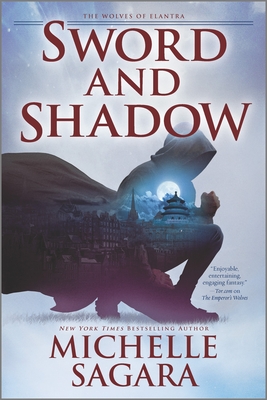 Sword and Shadow by Michelle Sagara
Sword and Shadow by Michelle Sagara Format: eARC
Source: supplied by publisher via Edelweiss
Formats available: paperback, ebook, audiobook
Genres: epic fantasy, fantasy, urban fantasy
Series: Wolves of Elantra #2,
Pages: 512
Published by Mira on February 22, 2022
Purchasing Info: Author's Website, Publisher's Website, Amazon, Barnes & Noble, Kobo, Bookshop.org, Better World Books
Goodreads
Beyond the Emperor's law
In the city of Elantra, the law is upheld by a few groups, and the most feared are the Wolves—the Emperor’s executioners. The newest member of this elite force is Severn Handred.
Granted a leave of absence to pursue information about his unknown past, Severn joins a mission to an enclave well outside the boundaries of the Empire. And he will be in danger the entire time. Still, the instincts that led him to the Wolves and the sense of duty that keeps him there can’t be discarded as easily as the tabard he wears.
While he's in the heart of the West March, enmeshed in a tangled web of mysteries that have been held for centuries, Severn's belief in justice is going to be tested. It's one mortal man and his single ally against a community of immortals who will kill to keep their secrets. But they don't know who they're up against.
“This world feels so complex and so complete.” —ReadingReality.net on The Emperor's Wolves
The Wolves of Elantra
Book 1: The Emperor's WolvesBook 2: Sword and Shadow
My Review:
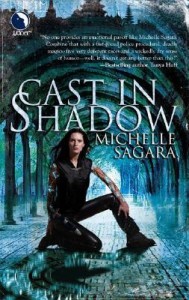 Once upon a time, there was a book. I remember reading the first book in the Chronicles of Elantra series, Cast in Shadow, at night, in a place we lived for just one year – among a string of such places. It was late in 2011, and I’d had the book, in fact the first half dozen books in the series, on my shelves since it was published in 2005.
Once upon a time, there was a book. I remember reading the first book in the Chronicles of Elantra series, Cast in Shadow, at night, in a place we lived for just one year – among a string of such places. It was late in 2011, and I’d had the book, in fact the first half dozen books in the series, on my shelves since it was published in 2005.
I’d put off starting it, but once I was in, I was hooked. But those first ten or so were the best. Not because they are objectively better, but because the world of Elantra is complex and convoluted and densely packed and highly political. There are a LOT of threads to this multi-pronged story, and more with every single book. I read those first ten close enough together that I still remembered all the plot threads each time a new one came out. By the point of the latest, Cast in Conflict, I couldn’t get myself into that same mindset or bring back enough of everything to get deeply embedded again. I had to put it down for a later read.
And now I want to pick it back up again. Very much so. Because the Wolves of Elantra series, The Emperor’s Wolves and especially this latest book, Sword and Shadow, have brought me back to the beginning – actually before the beginning – of the series that I so loved. And instead of finding myself neck deep in complexities that I don’t remember, I’m back at the very beginning of things, where what I learned in the Chronicles gives some events future weight – but doesn’t depend on that knowledge to be immersive all over again.
Because this prequel series, especially this entry, Sword and Shadow, is the origin story for Severn Handred, the person who haunts Kaylin Nera’s past, protects her present and dimly hopes for some kind of future with her, even if that future is just to keep watch over her and the trouble she inevitably gets into for the rest of her life.
Up until now, all we’ve known of Severn is what Kaylin knows, that he, like her, was a child of the lawless fiefs. That he entered her life when they were children. That he was older and better equipped to survive and to keep her alive in a place where life was short and precarious. And that he killed the children she thought were her friends in order to save her from a magic that neither of them understood then and still don’t.
But we know nothing of Severn before he met Kaylin at the age of 10 or thereabouts. This is the story of what he was before, and how those origins shaped and influenced who he has become after. And still.
 Escape Rating A+: I know, I haven’t said much about this story yet. And there are reasons for that, all of them tied up in the events here and the things that happened after. There’s always been an impression that whoever and whatever Severn was, he was definitely more than he seemed.
Escape Rating A+: I know, I haven’t said much about this story yet. And there are reasons for that, all of them tied up in the events here and the things that happened after. There’s always been an impression that whoever and whatever Severn was, he was definitely more than he seemed.
That’s an impression that turns into an exploration and eventually a reality in Sword and Shadow. It is certainly Severn’s origin story, as well as how he obtained the legendary magic-breaking weapon that he carries in the Chronicles.
But it’s also a very complex political story that dives deeply into the endless maneuverings of the Barrani who serve as the elves of this fantasy world. The Barrani are immortal, as are the Dragons who rule Elantra. The Dragons and the Barrani are eternal enemies who have made uneasy peace in order to maintain vigilance on the Shadows who want to destroy them both.
The Barrani approach to immortality is political and petty, where the Dragon approach is protective. Not that both races aren’t equally selfish and self-absorbed in their own ways, but the way that manifests in the Barrani is particularly destructive, both to themselves and others.
Their politics wrap around their immortality in that they spend it making themselves invulnerable, and the only way to do that is to cut themselves from anyone and anything who might become either a weakness, a rival or a weapon.
The story here is of Severn finding himself in the midst of a Barrani power struggle out of his own desire to find out where he came from, even if that knowledge will not affect who he is. The Barrani think they are using him for their own ends, and that he has little choice and less power.
Only to discover that little and less are not none, and that the force at the heart of the Barrani stronghold has a mind and heart of its own.
 Readers who have loved the Chronicles of Elantra will fall in love with the series all over again with Sword and Shadow. Readers who enjoyed the game of politics played for high-stakes and to the death in Modesitt’s Isolate and his Imager Portfolio series will thrill to the kind of maneuvering that takes place in Sword and Shadow. Readers who like their fantasy full-to-the-brim of political shenanigans and endless power struggles will adore this world and the deftness with which its story has been woven.
Readers who have loved the Chronicles of Elantra will fall in love with the series all over again with Sword and Shadow. Readers who enjoyed the game of politics played for high-stakes and to the death in Modesitt’s Isolate and his Imager Portfolio series will thrill to the kind of maneuvering that takes place in Sword and Shadow. Readers who like their fantasy full-to-the-brim of political shenanigans and endless power struggles will adore this world and the deftness with which its story has been woven.
While a part of me hopes that the author continues with Severn’s story, it also feels like his pre-Kaylin adventures might be done. But whichever way that question gets answered, I need to dive back into Cast in Conflict – not that all of Kaylin’s and Severn’s adventures aren’t cast in one sort of conflict or another. I can’t wait to see how things slot back into place now that I know so much more!

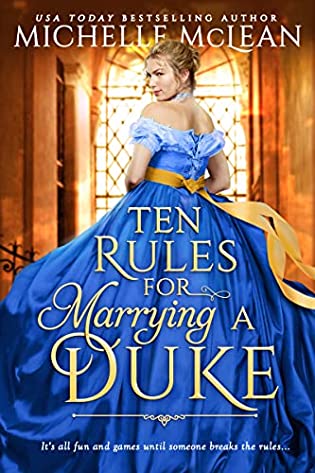 Ten Rules for Marrying a Duke by
Ten Rules for Marrying a Duke by 

 Fires of Edo (Shinobi Mystery #8) by
Fires of Edo (Shinobi Mystery #8) by 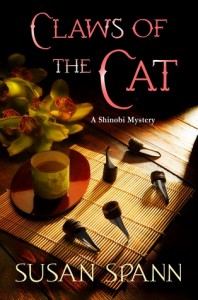 The entire
The entire  Of course, he’s supposed to. That he managed to fail upward at the end was a bit more annoying – even if all too realistic – than I really wanted to see. (Honestly, I wanted him to turn out to be the criminal. He was so obviously suspicious that it didn’t seem possible but no one stuck out quite the way he did.)
Of course, he’s supposed to. That he managed to fail upward at the end was a bit more annoying – even if all too realistic – than I really wanted to see. (Honestly, I wanted him to turn out to be the criminal. He was so obviously suspicious that it didn’t seem possible but no one stuck out quite the way he did.)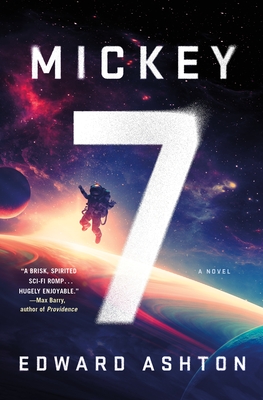 Mickey7 by
Mickey7 by 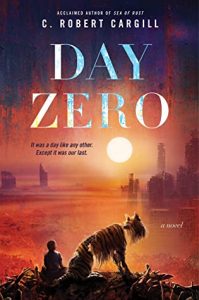 Mickey’s issues are the same ones dealt with in
Mickey’s issues are the same ones dealt with in 

 Current Giveaways:
Current Giveaways: Blog Recap:
Blog Recap: Coming This Week:
Coming This Week:













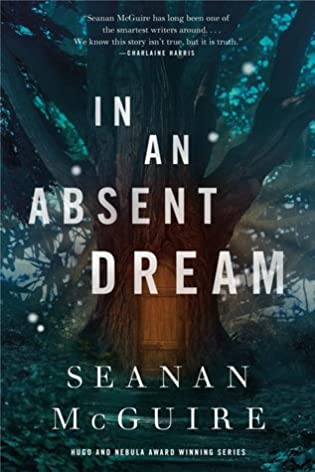 In an Absent Dream (Wayward Children, #4) by
In an Absent Dream (Wayward Children, #4) by  Escape Rating B+: Everything I picked up this week struck me wrong in one way or another. Sometimes very wrong as
Escape Rating B+: Everything I picked up this week struck me wrong in one way or another. Sometimes very wrong as  This series is special and awesome in a way that’s hard to describe. It’s as though the dreams of all of us who were bookish misfits as children dreamed all our dreams only to see those dreams come true in the form of nightmares. Some gifts come at just too high a price – and sometimes we’re desperate enough to pay that price anyway.
This series is special and awesome in a way that’s hard to describe. It’s as though the dreams of all of us who were bookish misfits as children dreamed all our dreams only to see those dreams come true in the form of nightmares. Some gifts come at just too high a price – and sometimes we’re desperate enough to pay that price anyway.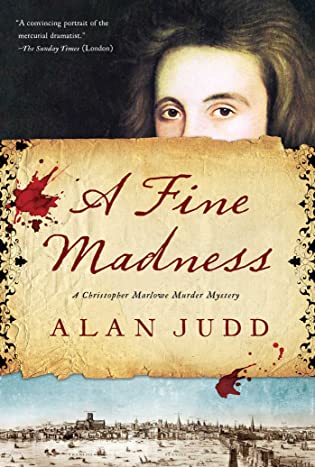 A Fine Madness by
A Fine Madness by 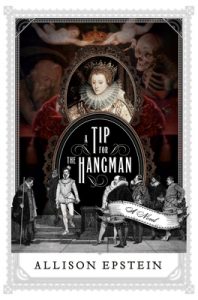 In other words, I was hoping for something that would be a slightly different take on the marvelous version of Marlowe’s story told in last year’s terrific and utterly absorbing
In other words, I was hoping for something that would be a slightly different take on the marvelous version of Marlowe’s story told in last year’s terrific and utterly absorbing 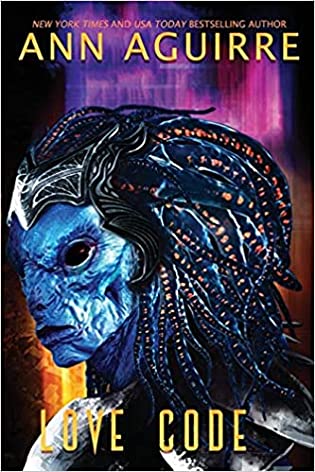 Love Code (Galactic Love #2) by
Love Code (Galactic Love #2) by  What makes this story work so well is the way that their power dynamics shift, and the way that they both adapt in spite of so many things standing – sometimes literally – in their way.
What makes this story work so well is the way that their power dynamics shift, and the way that they both adapt in spite of so many things standing – sometimes literally – in their way.